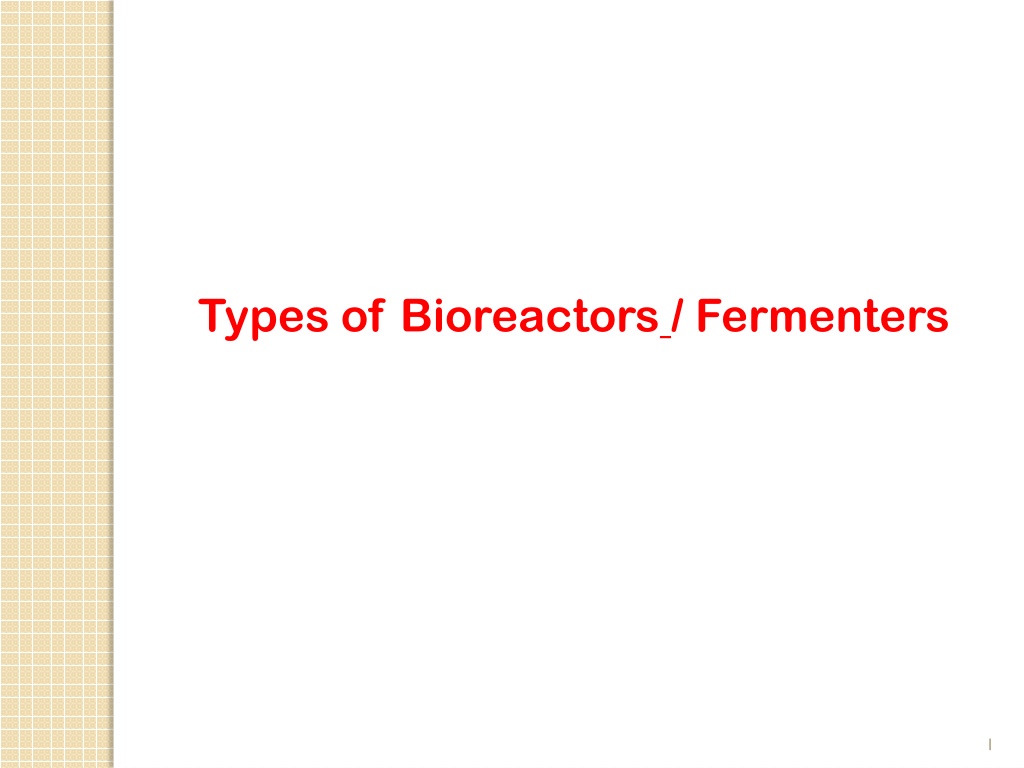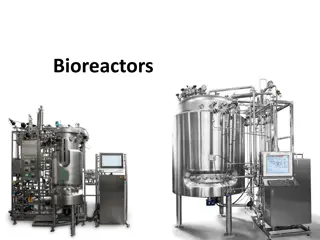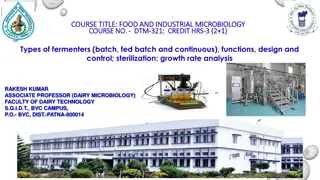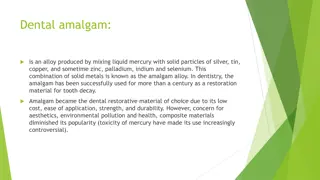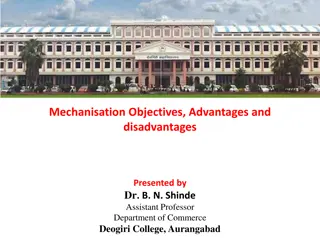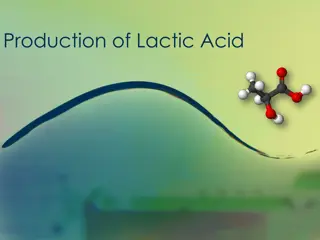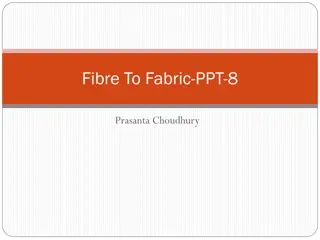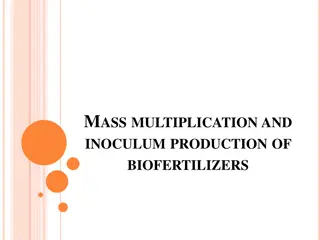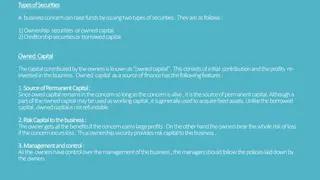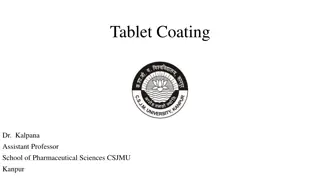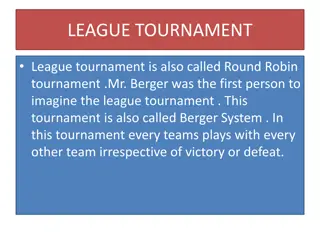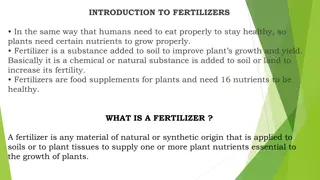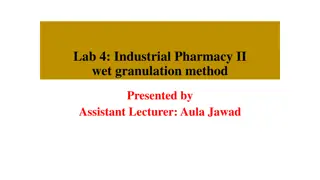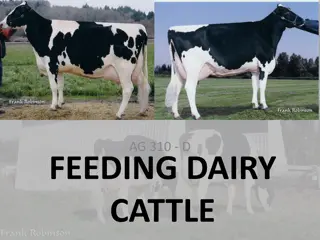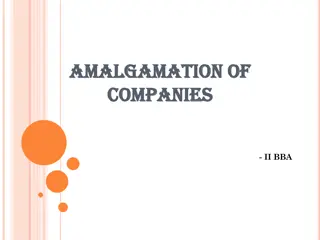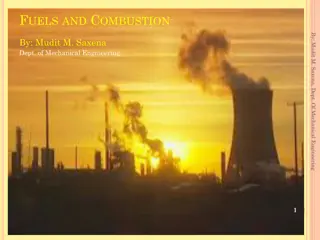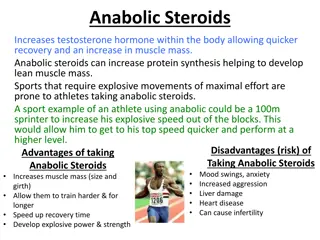Overview of Bioreactors and Fermenters: Types, Advantages, and Disadvantages
Bioreactors and fermenters are essential devices for cultivating organisms to produce desired products. This article explores various types such as stirred tank, airlift, and packed bed bioreactors, highlighting their advantages and disadvantages in terms of design, operation, and cost-efficiency.
Download Presentation

Please find below an Image/Link to download the presentation.
The content on the website is provided AS IS for your information and personal use only. It may not be sold, licensed, or shared on other websites without obtaining consent from the author. Download presentation by click this link. If you encounter any issues during the download, it is possible that the publisher has removed the file from their server.
E N D
Presentation Transcript
Bioreactor / Fermenter A bioreactor is basically a device in which the organisms are cultivated to form the desired products. It is a containment system designed to give right environment for optimal growth and metabolic activity of the organism. 2
1.Stirred Tank Bioreactor 2.Airlift Bioreactor 3.Packed Bed Bioreactor 4.Fluidized Bed Bioreactor 5.Photo Bioreactor 6.Membrane Bioreactor 7.Rotary Drum Bioreactor 8.Mist Bioreactor 3
Advantages of Stirred Tank Bioreactor . Continuous operation. Good temperature control. Easily adapts to two phase runs. Good control. Simplicity of construction. Low operating cost. Easy to clean. 5
Disadvantages of Stirred Tank Bioreactor The need for shaft seals and bearings. Size limitation by motor size, shaft length & weight 6
Advantages of Airlift Fermenter Simple design Easier sterilization (no agitator shaft parts). Low Energy requirement vs stirred tank. Greater heat-removal vs stirred tank. Very low cost. 8
Disadvantages of Airlift Fermenter Greater air throughput and higher pressures needed. Inefficient break the foam when foaming occurs. No bubbles breaker 9
Advantages of Packed Bed Reactor Higher conversion per unit mass of catalyst than other catalytic reactors. Continuous operation No moving parts to wear out. Low operating cost Catalyst stays in the reactor Reaction mixture/catalyst separation is easy. Effective at high temperatures and pressures 11
Disadvantages of Packed Bed Reactor Undesired heat gradients. Poor temperature control. Difficult to clean. Difficult to replace catalyst. Undesirable side reactions. 12
Advantages of Fluidized Bed Reactor Uniform Particle Mixing. Uniform Temperature Gradients. Ability to Operate Reactor in Continuous State. 14
Disadvantages of Fluidized Bed Reactor Increased Reactor Vessel Size Pumping Requirements and Pressure Drop Particle Entrainment Lack of Current Understanding Erosion of Internal Components Pressure Loss Scenarios 15
Advantages of Photobioreactor Higher productivity. Large surface-to-volume ratio. Better control of gas transfer. Reduction in evaporation of growth medium. More uniform temperature. 17
Disadvantages of Photobioreactor Capital cost is very high. The productivity and production cost in some enclosed photobioreactor systems are not much better than those achievable in open-pond cultures. The technical difficulty in sterilizing. 18
Advantages of membrane bioreactor The loss of enzyme is reduced. Enzyme lost by denaturation can be made up by periodic addition of enzyme. Substrate and enzyme can be easily replaced. 20
Advantages of Rotary Drum Reactor High oxygen transfer. Good mixing facilitates better growth and impart less hydrodynamic stress. 22
Disadvantages of Rotary Drum Reactor Difficult to scale up 23
Advantages of Mist Bioreactor High oxygen transfer. . Hydrodynamic stress elimination. Low production cost. 25
Disadvantages of Mist Bioreactor Mesh trays and cylindrical stainless steel meshes are required 26
Bubble-up Fermenter Bubble Column Fermenter 28
